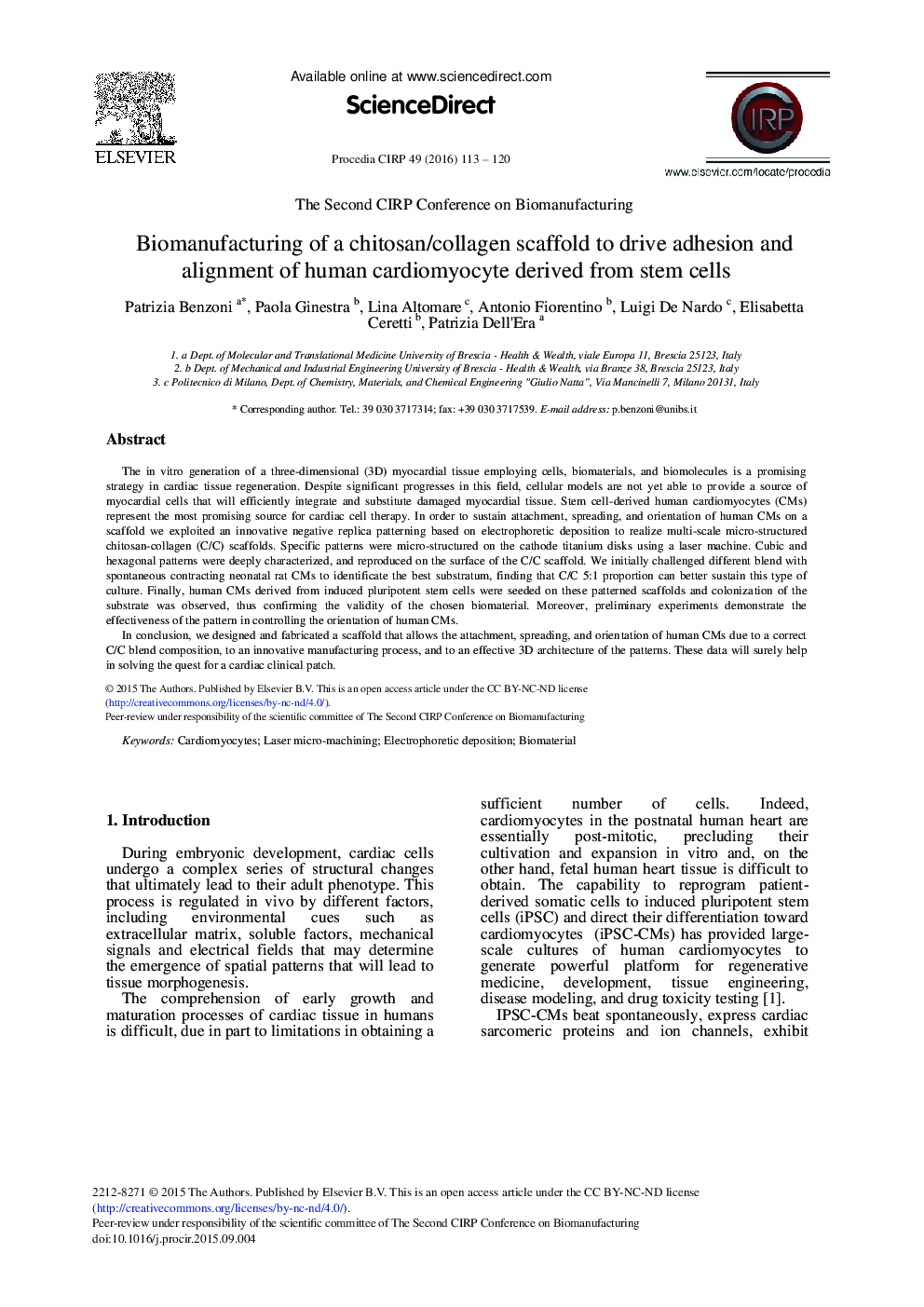| Article ID | Journal | Published Year | Pages | File Type |
|---|---|---|---|---|
| 1698238 | Procedia CIRP | 2016 | 8 Pages |
The in vitro generation of a three-dimensional (3D) myocardial tissue employing cells, biomaterials, and biomolecules is a promising strategy in cardiac tissue regeneration. Despite significant progresses in this field, cellular models are not yet able to provide a source of myocardial cells that will efficiently integrate and substitute damaged myocardial tissue. Stem cell-derived human cardiomyocytes (CMs) represent the most promising source for cardiac cell therapy. In order to sustain attachment, spreading, and orientation of human CMs on a scaffold we exploited an innovative negative replica patterning based on electrophoretic deposition to realize multi-scale micro-structured chitosan-collagen (C/C) scaffolds. Specific patterns were micro-structured on the cathode titanium disks using a laser machine. Cubic and hexagonal patterns were deeply characterized, and reproduced on the surface of the C/C scaffold. We initially challenged different blend with spontaneous contracting neonatal rat CMs to identificate the best substratum, finding that C/C 5:1 proportion can better sustain this type of culture. Finally, human CMs derived from induced pluripotent stem cells were seeded on these patterned scaffolds and colonization of the substrate was observed, thus confirming the validity of the chosen biomaterial. Moreover, preliminary experiments demonstrate the effectiveness of the pattern in controlling the orientation of human CMs.In conclusion, we designed and fabricated a scaffold that allows the attachment, spreading, and orientation of human CMs due to a correct C/C blend composition, to an innovative manufacturing process, and to an effective 3D architecture of the patterns. These data will surely help in solving the quest for a cardiac clinical patch.
